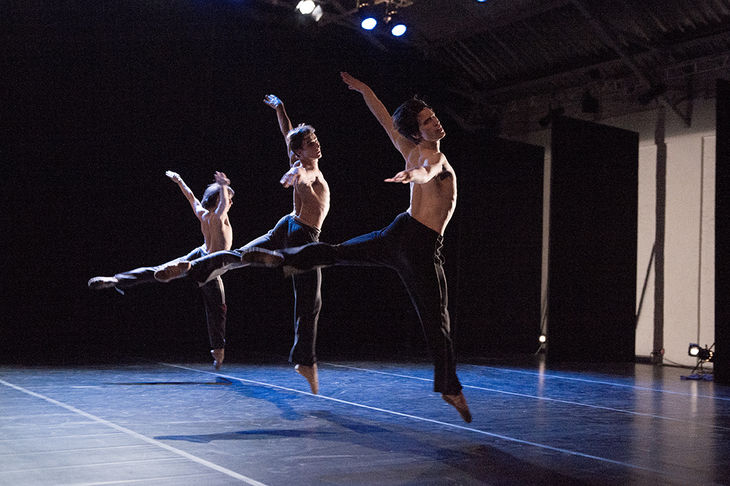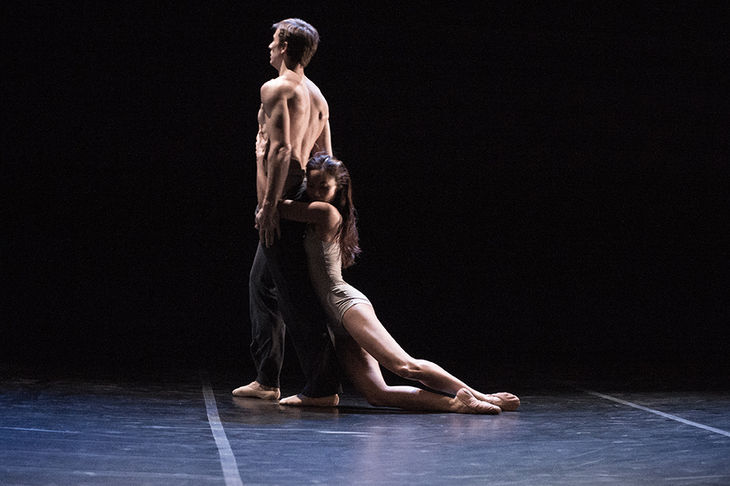A ‘Platform’ for Change—Vishnevafest 2013
By archaicpress@gmail.com / on December 6th, 2013 / in ARCHAIC PRESS, EntertainmentBy Ryan Wallace
In an attempt to change perceptions of the Russian dance community and lead tradition into modernity, the first annual Context: Diana Vishneva Festival opened last evening, Dec. 4 in Moscow at the Platforma Theatre, with an exhibition of young contemporary choreographers.
Bringing together contemporary choreographers in the ballet capital of the world, the festival established a creative laboratory to satiate the Russian audience’s hunger for modern choreography. “The first thing that I wanted for this festival was to represent young choreographers who don’t have a chance to present their works. It’s important for them to show what they have learned—their growth and achievements” Diana Vishneva, internationally recognized prima ballerina and art director of the festival, said.
A primary motif of the evening was a display of collaboration—between choreographers, dancers, partners and international allies. With 2013 marking the “Friendship Year”, a century of peaceful and open collaborations between Russia and the Netherlands, the evening began with a performance called “Blue Journey” choreographed by David Middendorp of the Korzo Producties of the Netherlands.
Mixing a variety of media—music, movement and digital imagery—the piece excellently demonstrated the theatre of the future. “I wanted to make choreography about dreaming, about fantasy. And animation is a very nice way to extend the real world into the dream world” Middendorp said. A multi-dimensional production, with dancers interacting with digital shadows cast upon a screen, “Blue Journey” shows great delicacy and intricacy of movement, as the syncopations of the video and human shadows merge into one. Appearing to manipulate their shadows and dancing with the fluidity of smoke, which mirrored their movements, the performers brought even the simplest of steps to life.
Following a brief intermission, four young contemporary choreographers brought their original works to the stage—Marina Akelkina, Marcelo Gomes, Konstantin Keykhel and Vladimir Varnava. 
Beginning with a piece choreographed by a primary dancer of the American Ballet Theatre, Marcelo Gomes, the audience was slowly introduced into different forms of contemporary dance. With stunning partner-work and apparent long-rooted traditional ballet techniques, Gomes’ dancers who were selected from the Bolshoi Theatre in Moscow demonstrated the ideal balance between traditional and modern interpretations of dance. A commentary on human mortality, the cycle of life and the loss of a love, Marcelo Gomes’ piece was able to divine classical ballet movements with an emotive flair. Effortless collaborations between the strong male frames and the fluid ballerinas allowed Gomes to convey a range of emotions through beautiful movements—creating a cathartic experience for the choreographer and audience alike. “It was nice to be able to put that into movement” Gomes said. “To be able to put that into partnering, which is something I love to do so much as a dancer.”
Russian contemporary choreographer Konstantin Keykhel, an alumni of the Vaganova Academy of Russian Ballet, continued the motif of collaboration with a piece contingent on the team dynamic. Choreographing a sextet of dancers, Keykhel’s performance embraced the theme of how one’s movements could interact with another’s—causing a ripple in interpretation. As one dancer interacted with another, the movements changed direction and speed, however, all the while maintaining a cohesive fluidity.
Pushing the audience even further past their comfort zone, breaking boundaries and perhaps even a few laws, honored Artist of Russia Marina Akelkina presented an evocative trio. “I am very much interested in the relationship between people and choreography” Akelkina said. “Relationships between a man and a woman, a woman and a woman, and a man and a man—just human relationships. So I was interested in creating something that would express that.” Carrying a complex storyline, accompanied by raw, gritty sexuality, Akelkina’s piece came in short vignettes best described as chapters of a lyrical novel—50 Shades of Shoes. Beginning with a duet in the shadows, with dark music accompanying even darker subtexts, at first glance the piece appeared about dominance and submission. As the two dancers became intertwined, connected passionately, the image of their two intertwined shoes came into focus. Further complicating the story, a third dancer took the stage trying to find his position in the movements of the dance—creating a contemporary ménage à trios. Ultimately only two intertwined shoes remained, however, in the process Akelkina was able to convey the true complexity of human relationships.
The final performance of the evening, by Russian contemporary choreographer and millennial Vladimir Varnava, illustrated the power of contemporary dance. Displaying a gifted talent for the craft of storytelling, Varnava was able to mimic the constructs of a great novel—creating transient characters that were impressionable, embodying multiple characters, and developing depth of plot. Choreographing the entire piece in mere hours, as all of the choreographers did for the exhibition, Varnava was able to develop such an extensive piece by working with emotions rather than stringent steps.
Opening the Russian public to more contemporary forms of dance, the exhibition began the festival with a surprising display of the vast possibilities contemporary dance has to offer. “I was facing the unknown because I didn’t know anything about the works that they presented today” Vishneva said. “I must say that these four choreographers that presented their work here presented something completely different, and it was like presenting four of nature’s elements on a stage.” Encouraging the Russian audience’s growth and yearning for contemporary dance, the Context: Diana Vishneva Festival is making headway in altering the perceptions of traditional Russian dance worldwide, through immense talent and an eclectic roster of choreographers.
